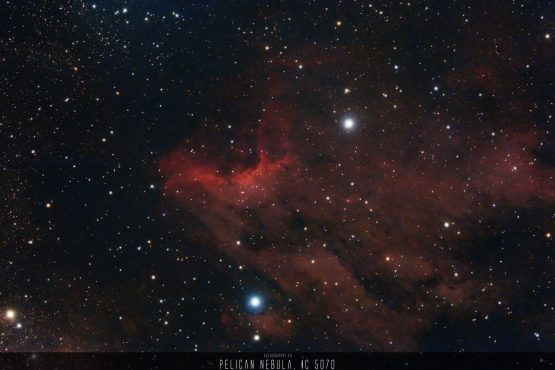The Pelican Nebula is a large emission nebula, known for its active star formation and evolving gas clouds. It is an H II region, which means it is a hotbed of ionized hydrogen gas, giving it its characteristic glow. The nebula is separated from the nearby North America Nebula by a dark dust cloud. Its appearance, resembling a pelican, is due to the intricate shapes formed by the ionized gas and dust.
Names and Catalog numbers
- Trivial Names: Pelican Nebula
- IC: 5070
Position and the cosmic neighborhood
The Pelican Nebula is situated near the bright star Deneb in the constellation Cygnus. It is part of a rich region of gas and dust and is located close to the North America Nebula, with which it shares a cosmic neighborhood. The nebula is best observed during the summer months when Cygnus is prominently visible in the night sky.
Nice to Know
- The Pelican Nebula is a favorite target for astrophotographers due to its vibrant colors and intricate structures.
- It is part of the same molecular cloud complex as the North America Nebula.
Brightness, distance and size
The Pelican Nebula has an apparent magnitude of 8, making it a relatively bright nebula for observation and photography. It is located approximately 1,800 light-years from Earth and spans about 30 light-years across. In the night sky, it covers an area of 60 by 50 arcminutes, making it a sizable target for wide-field telescopes.



